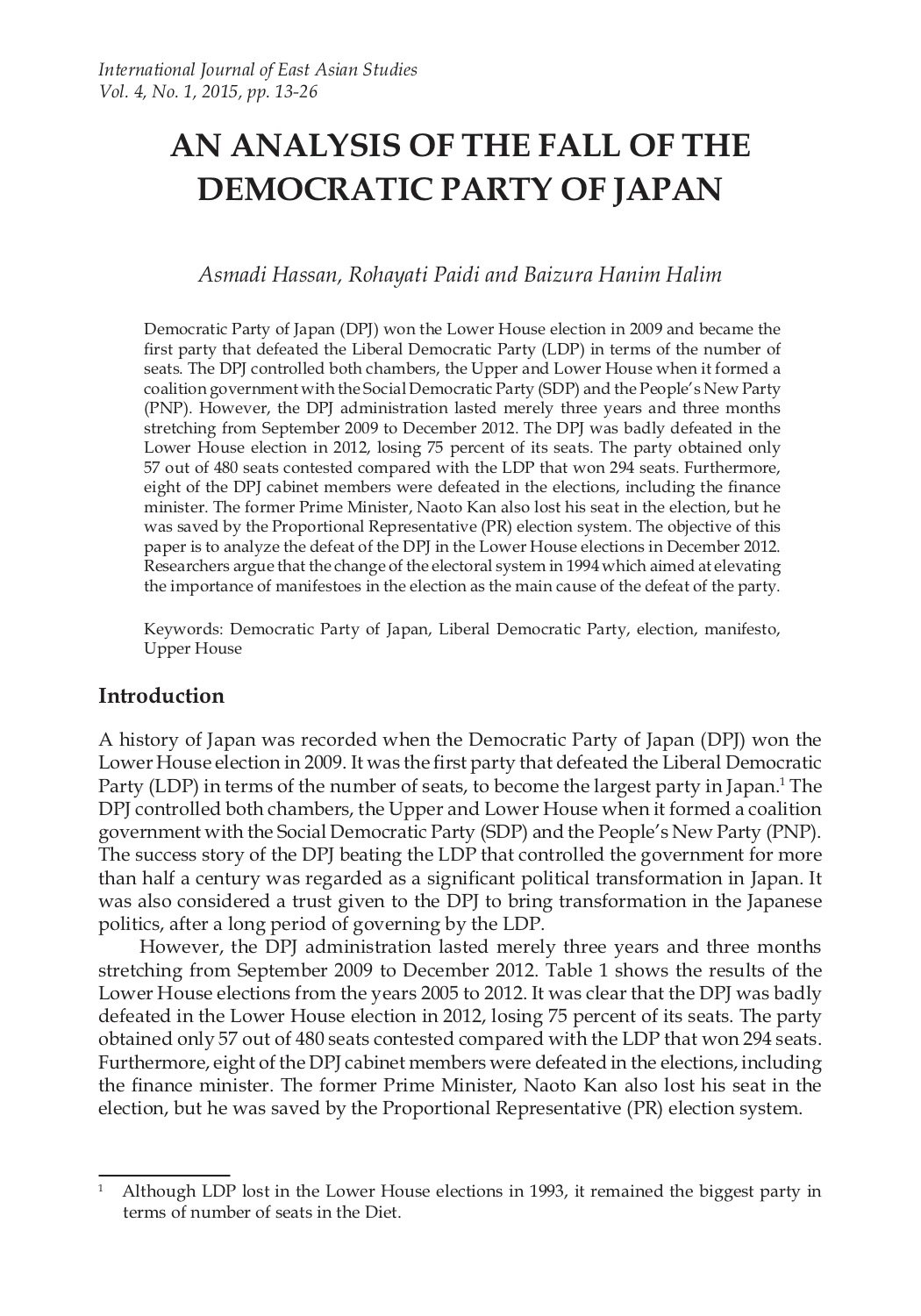An Analysis of the Fall of the Democratic Party of Japan
Main Article Content
Abstract
Democratic Party of Japan (DPJ) won the Lower House election in 2009 and became the first party that defeated the Liberal Democratic Party (LDP) in terms of the number of seats. The DPJ controlled both chambers, the Upper and Lower House when it formed a coalition government with the Social Democratic Party (SDP) and the People’s New Party (PNP). However, the DPJ administration lasted merely three years and three months stretching from September 2009 to December 2012. The DPJ was badly defeated in the Lower House election in 2012, losing 75 percent of its seats. The party obtained only 57 out of 480 seats contested compared with the LDP that won 294 seats. Furthermore, eight of the DPJ cabinet members were defeated in the elections, including the finance minister. The former Prime Minister, Naoto Kan also lost his seat in the election, but he was saved by the Proportional Representative (PR) election system. The objective of this paper is to analyze the defeat of the DPJ in the Lower House elections in December 2012. Researchers argue that the change of the electoral system in 1994 which aimed at elevating the importance of manifestoes in the election as the main cause of the defeat of the party.
Downloads
Article Details
Copyright
Submission of a manuscript to the WILAYAH implies that the submitted work has not been published before (except as part of a thesis or report or abstract), that it is not under consideration for publication elsewhere; that all co-authors have approved its publication. The WILAYAH : International Journal of East Asian Studies adopts CC BY license. As such, we would be grateful if an acknowledgement accompanies the republication that the work was originally published in WILAYAH. The editors will ensure digital preservation of access to the journal content by the Journal depository section.
Disclaimer
Although the Department of East Asian Studies is the publisher of the WILAYAH : International Journal of East Asian Studies, the views presented in the WILAYAH are entirely those of the contributors and do not reflect the official stand of the Department of East Asian Studies. The Department does not hold itself responsible for the accuracy of any article published. Publisher and co-publishers assume no responsibility, nor by the editors for any injury and/or damage to persons or property as a result of any actual or alleged libellous statements, infringement of intellectual property or privacy rights, or products liability, whether resulting from negligence or otherwise, or from any use or operation of any ideas, instructions, procedures, products or methods contained in the material therein.

